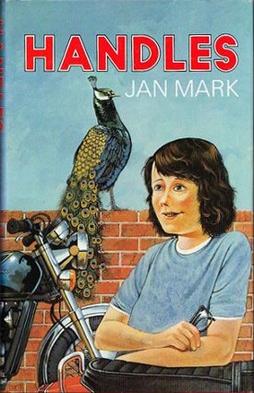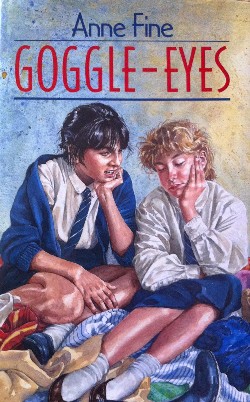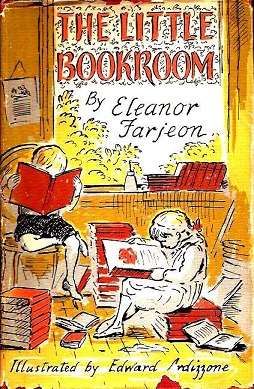The Carnegie Medal for Writing, established in 1936, is a British literary award that annually recognises one outstanding new English-language book for children or young adults. It is conferred upon the author by the Chartered Institute of Library and Information Professionals (CILIP), who calls it "the UK's oldest and most prestigious book award for children's writing". CILIP is currently partnered with the audio technology company Yoto in connection with the award.

Raymond Redvers Briggs was an English illustrator, cartoonist, graphic novelist and author. Achieving critical and popular success among adults and children, he is best known in Britain for his 1978 story The Snowman, a book without words whose cartoon adaptation is televised and whose musical adaptation is staged every Christmas.

Goodnight Mister Tom is a children's novel by English author Michelle Magorian, published by Kestrel in 1981. Harper & Row published an American edition the same year. Set during World War II, it features a boy abused at home in London who is evacuated to the country at the outbreak of the war. In the care of Mister Tom, an elderly recluse, he experiences a new life of loving and care.

The evacuation of civilians in Britain during the Second World War was designed to defend individuals, especially children, from the risks associated with aerial bombing of cities by moving them to areas thought to be less at risk.

Drusillas Park is a small 10-acre (4.0 ha) zoo near to Alfriston, in East Sussex, UK. Its exhibits are targeted towards children between 2 and 12 years old. It attracts between 350,000 and 370,000 visitors per year and until December 2021 was home to the first Hello Kitty-themed attraction in Europe.
Cynthia Harnett was an English author and illustrator, mainly of children's books. She is best known for six historical novels that feature ordinary teenage children involved in events of national significance, four of them in the 15th century. They are characterised by meticulous background research and vivid evocation of history.

Sea Change is a realistic children's adventure novel by Richard Armstrong, first published by Dent in 1948 with line drawings by Michel Leszczynski and promoted as "A novel for boys". Set on a contemporary cargo ship, it features a sixteen-year-old apprentice in the British Merchant Navy who has completed one year at sea, of four years required. He is working towards his second mate's ticket, but has mixed feelings about the life.
Mary Treadgold was an English author of books for children and adults, a literary editor and a BBC producer. She won the Carnegie Medal for British children's books in 1941.
Marion Catherine "Kitty" Barne was a British screenwriter and author of children's books, especially on music and musical themes. She won the 1940 Carnegie Medal for British children's books.

Handles is a realistic children's novel by Jan Mark, first published in 1983 by Kestrel Books of Harmondsworth, London, with illustrations by David Parkins. Set in the Norfolk countryside, it features a city girl on holiday, who loves motorcycles. Nicholas Tucker calls it "a happy, optimistic work"; Erica escapes "mean-minded relatives" for the "anarchic motorbike-repair outfit in a nearby town".

We Couldn't Leave Dinah is a children's novel by Mary Treadgold, first published by Jonathan Cape in 1941 with illustrations by Stuart Tresilian. It is a contemporary adventure story set on a fictional island in the English Channel during World War II and eventually during a German occupation. Treadgold won the 1941 Carnegie Medal recognising the year's outstanding children's book.

Nordy Bank is a children's adventure novel by Sheena Porter, published by Oxford in 1964 with illustrations by Annette Macarthur-Onslow. Set in the hills of Shropshire, it features children whose camping holiday seems to engage the prehistoric past. Porter won the annual Carnegie Medal for excellence in British children's literature.

A Valley Grows Up is a history book for children, written and illustrated by Edward Osmond and published by Oxford University Press in 1953. It features an imaginary English valley over the course of seven thousand years, from 5000 BCE to 1900. Osmond won the annual Carnegie Medal, recognising the year's best children's book by a British subject. In more than seventy years only a handful of nonfiction books have been so honoured.

The Little Grey Men: A story for the young in heart is a children's fantasy novel written by Denys Watkins-Pitchford under the pen name "BB" and illustrated by the author under his real name. It was first published by Eyre & Spottiswoode in 1942 and it has been reissued several times. Set in the English countryside, it features the adventures of four gnomes who may be the last of their race. At the same time it features the countryside during three seasons of the year.

Collected Stories for Children is a collection of 17 fantasy stories or original fairy tales by Walter de la Mare, first published by Faber in 1947 with illustrations by Irene Hawkins. De la Mare won the annual Carnegie Medal recognising the year's best children's book by a British subject. It was the first collection to win the award and the first time that previously published material had been considered.

Goggle-Eyes, or My War with Goggle-Eyes in the US, is a children's novel by Anne Fine, published by Hamilton in 1989. It features a girl who thinks she hates her mother's boyfriend. In the frame story, set in a Scottish day school, that girl Kitty tells her friend Helen about hating her mother's boyfriend.

The Little Bookroom is a collection of twenty-seven stories for children by Eleanor Farjeon, published by Oxford University Press in 1955 with illustrations by Edward Ardizzone. They were selected by the author from stories published earlier in her career. Most were in the fairy tale style.
Marcus Crouch was an English librarian, and an influential commentator on and reviewer of children's books.
The evacuation of civilians from the Channel Islands in 1940 was an organised, partial, nautical evacuation of Crown dependencies in the Channel Islands, primarily from Jersey, Guernsey, and Alderney to Great Britain during World War II. The evacuation occurred in phases, starting with school aged children, their teachers, and mother volunteers. The islands and the British military began the evacuation following the Allies' loss in the Battle of France, after which the British Army withdrew from the islands.

Samantha Angus is an English writer of historical adventure novels for children. She is the author of five books, including Soldier Dog, Captain, A Horse Called Hero, and The House on Hummingbird Island. Her novels deal with bleak moments of British and colonial history.













